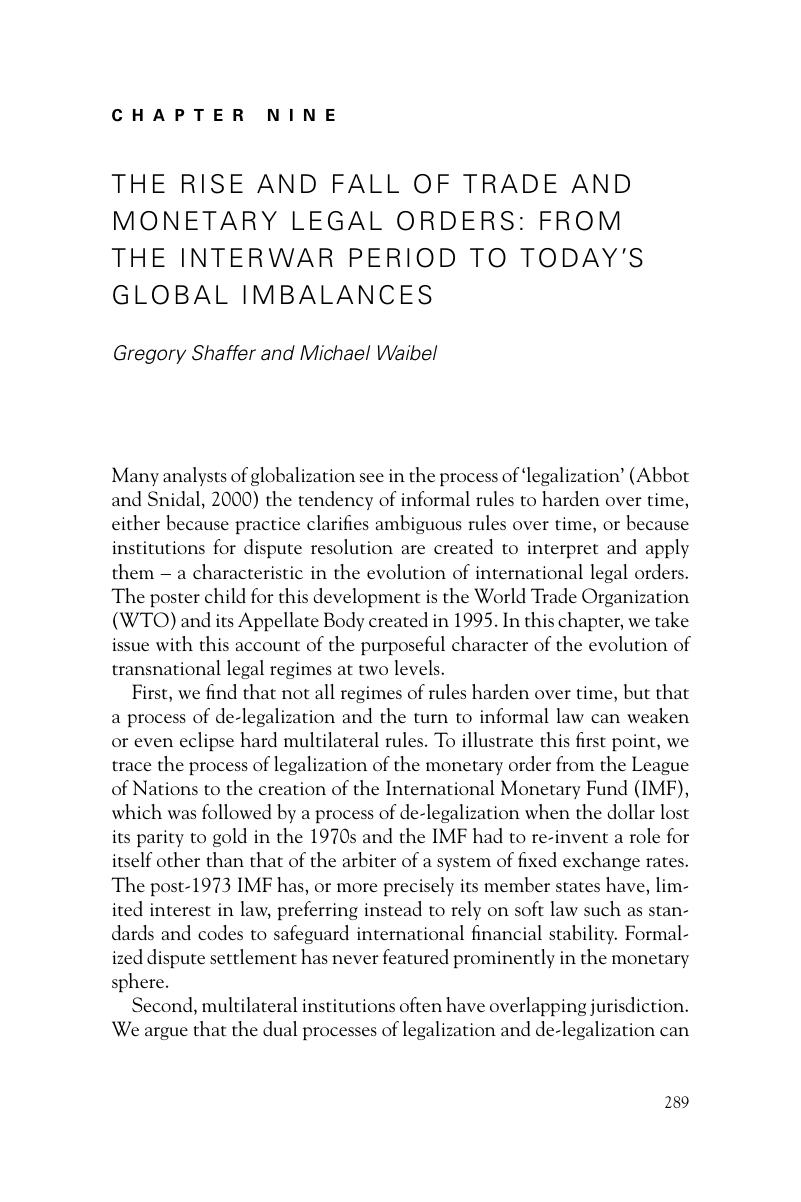Book contents
- Contractual Knowledge
- Cambridge Studies in Law and Society
- Contractual Knowledge
- Copyright page
- Contents
- Figures
- Tables
- Notes on contributors
- Book part
- Glossary
- Chapter One Contractual knowledge: One hundred years of legal experimentation in global markets
- Part One Contracts and sovereign debt obligations: The evolution of contractual provisions
- Part Two Consolidating international organizations: The mobilization of social capital and the standardization of interpretive processes
- Part Three Structuring fields: Market dominance, complementarity and differentiation in complex institutional ecologies
- Chapter Nine The rise and fall of trade and monetary legal orders: From the interwar period to today's global imbalances
- Chapter Ten Credit ratings and global economic governance: Non-price valuation in financial markets
- Chapter Eleven Contracts and private law in the emerging ecology of international lawmaking
- Index
- Series page
- References
Chapter Nine - The rise and fall of trade and monetary legal orders: From the interwar period to today's global imbalances
from Part Three - Structuring fields: Market dominance, complementarity and differentiation in complex institutional ecologies
Published online by Cambridge University Press: 05 May 2016
- Contractual Knowledge
- Cambridge Studies in Law and Society
- Contractual Knowledge
- Copyright page
- Contents
- Figures
- Tables
- Notes on contributors
- Book part
- Glossary
- Chapter One Contractual knowledge: One hundred years of legal experimentation in global markets
- Part One Contracts and sovereign debt obligations: The evolution of contractual provisions
- Part Two Consolidating international organizations: The mobilization of social capital and the standardization of interpretive processes
- Part Three Structuring fields: Market dominance, complementarity and differentiation in complex institutional ecologies
- Chapter Nine The rise and fall of trade and monetary legal orders: From the interwar period to today's global imbalances
- Chapter Ten Credit ratings and global economic governance: Non-price valuation in financial markets
- Chapter Eleven Contracts and private law in the emerging ecology of international lawmaking
- Index
- Series page
- References
Summary

- Type
- Chapter
- Information
- Contractual KnowledgeOne Hundred Years of Legal Experimentation in Global Markets, pp. 289 - 323Publisher: Cambridge University PressPrint publication year: 2016
References
- 3
- Cited by



